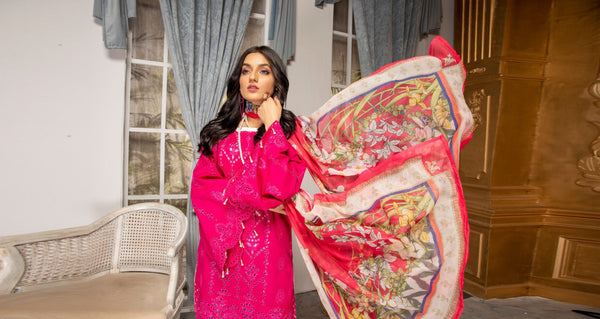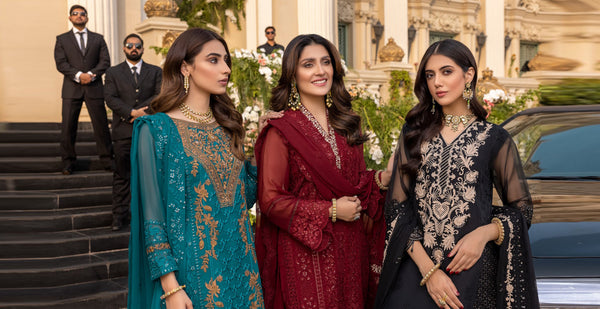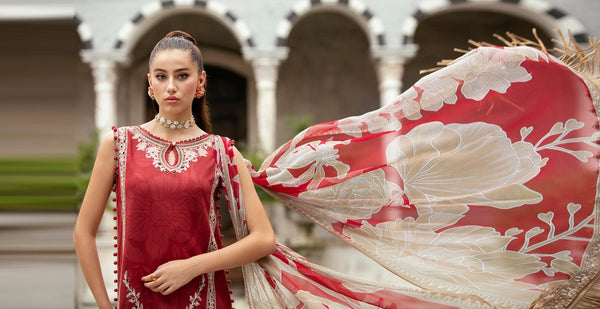What is a Saree?
A saree (also spelled Sari) is a traditional garment, mostly worn by women in the Indian subcontinent. It is a long, unstitched piece of fabric—usually around six yards—that is elegantly draped around the waist and over the shoulder, typically paired with a blouse (choli) and a petticoat. Sarees come in countless fabrics, colors, patterns, and styles, making them one of the most versatile ethnic outfits in the world.
The timeless saree is among the most iconic ensembles from South Asia, symbolizing grace and tradition.
From India to Pakistan, Bangladesh, Nepal, and Sri Lanka, women across South Asia have cherished the saree for centuries, draping this beautiful fabric in diverse ways that reflect culture and identity.

Multi-Color Saree Design for Women
Today, the word "saree" often refers to the full ensemble: the drape itself, paired with a blouse and petticoat. In this blog, we’ll explore the fascinating history of the saree, its making, popular styles, modern trends, and why this garment remains one of the most loved fashion statements in South Asia and beyond.
Saree Background, History & Origin
The saree is believed to have originated during the Indus Valley Civilization (around 2800–1800 BC). Its popularity grew with the spread of cotton cultivation and weaving as early as the 5th millennium BC.
Early sarees were made from handwoven cotton, dyed with natural colors like indigo, turmeric, red madder, and lac. This marked the beginning of a vibrant tradition that continues to shape South Asian fashion today.
By the 2nd century BC, both men and women wore unstitched draped garments. However, during the 12th century, cultural influences—including the Muslim conquests in northern and central India—transformed how sarees were styled. Women began wearing sarees over short blouses and petticoats, a practice that remains common today.

A Red Saree with Embroidery Work
The Making Of The Saree
The saree owes much of its charm to South Asia’s rich handicraft traditions. From silk weaving to dyeing and printing, every region adds its own touch of artistry.
For instance, in Varanasi (Uttar Pradesh), traditional wooden looms are still used to create the famous Banarasi silk sarees—beloved for their bright colors, metallic threadwork, and bridal appeal.
Popular saree fabrics include silk, cotton, chiffon, crepe, jacquard, and khadi. Each type reflects the cultural heritage of its region. In Kerala, the elegant white Kasavu saree with golden borders is a symbol of purity and tradition.

Silk Saree with Heavy Border
While handwoven sarees remain highly valued, globalization and demand for affordable options have boosted machine-loom sarees. This makes sarees more accessible, though traditional weaving families face challenges as mass-produced imports compete with handcrafted designs.
Different Saree Styles & Types
India’s diverse culture has given rise to countless regional saree styles. Some of the most popular include:
- Taant Sarees: From West Bengal, made with light cotton and wide decorative borders.
- Kasavu Sarees: Kerala’s signature saree, featuring golden zari borders on cream or white fabric.
- Banarasi Silk Sarees: From Uttar Pradesh, woven with rich silk and gold embroidery—ideal for weddings.
- Paithani Sarees: Maharashtra’s pride, woven with dual-tone silk and peacock motifs.
- Kanjeevaram Sarees: From Tamil Nadu, known for their bold colors and temple-inspired patterns.
- Sambalpuri Sarees: From Odisha, woven using the unique Ikat technique for unfading colors.
- Bandhani Sarees: From Gujarat and Rajasthan, featuring tie-dye patterns.
- Leheriya Sarees: Another Rajasthani tie-dye style with flowing diagonal stripes.
- Muga Silk Sarees: From Assam, crafted with durable golden-hued silk.
- Chanderi Sarees: From Madhya Pradesh, blending silk, cotton, and zari for a royal look.
- Jamdani Sarees: From Bengal, made of fine cotton with floral motifs.
- Phulkari Sarees: Embroidered with colorful floral threadwork from Punjab.
- Gota Patti Sarees: Rajasthani sarees adorned with metallic applique embroidery.
- Chikankari Sarees: Lucknow’s specialty, showcasing delicate white thread embroidery.
- Pochampally Sarees: From Telangana, famous for Ikat weaving and geometric patterns (even worn by Air India cabin crew).

Stunning Green Color Saree
Hottest Saree Trends Right Now
Sarees are evergreen, but modern designers keep reinventing them with fresh styles. Current saree trends include:
- Pastel Shades: Soft pastel silk sarees in cream, mint, and turquoise with light embroidery.
- Belted Silhouettes: Adding belts to define the waist and modernize the look.
- Thin Borders: Minimalist and lightweight, replacing heavier traditional borders.
- Borderless Sarees: Clean, simple drapes without borders for a contemporary appeal.
- Ombre Sarees: Flowing fabrics in gradient color palettes.
- Multicolor Sarees: Bright combinations in sequins, embroidery, and printed fabrics.
- Sequin Work: Shimmery sarees with heavy sequin embellishments, perfect for parties.

Mustard Saree with Heavy Border Work
How & When To Wear Sarees
The saree’s versatility makes it suitable for almost every occasion. From casual wear to festive events, weddings, and parties, there’s a saree for every moment.
Many women begin wearing sarees in their teenage years, often at family functions or festivals. Here are some tips to drape and style a saree flawlessly:
- Experiment with different draping styles that flatter your body type.
- Pick a well-fitted blouse and petticoat that complement your saree.
- Select fabrics—cotton, silk, chiffon, or georgette—based on comfort and occasion.
- Tuck and pleat neatly, using safety pins if needed for security.
- Wear your heels before draping to ensure the correct length.
- Keep accessories elegant—avoid oversized bags and too much jewelry.

Elegant Pink Silk Saree with Border Designs
Why Are Sarees So Popular & Loved?
The saree is more than just clothing—it’s a cultural symbol of beauty, tradition, and identity. Even today, it remains one of the most worn ethnic outfits in India, Pakistan, Bangladesh, Sri Lanka, and beyond.
Its enduring appeal lies in its versatility (over a hundred draping styles), comfort in hot climates, and cultural significance across communities. For many women, wearing a saree is not just fashion—it’s a way of celebrating heritage while embracing elegance.
This unstitched yet magical piece of fabric continues to captivate young and old alike, ensuring the saree will never go out of style.






